Climbing rugged Mt Barney, Southeast Queensland’s second-highest mountain is one of the state’s most spectacular land-based outdoor pursuits. Just don’t underestimate the time, fitness, and skills required to reach the top.
Hiking Mt Barney may not be one of the first things to do in Queensland that pops into mind but it certainly is one of the most challenging. When my mountain guide, Mt Barney Lodge Country Retreat co-owner Innes Larkin, tells me to expect at least 10 hours of trail time during tomorrow’s expedition, I figure he must be exaggerating, maybe to keep me from making early dinner arrangements back in Brisbane.
“Surely we’ll be back within eight hours?” I ask my husband as we sip local wine and marvel at the fairy floss tufts of clouds tentatively venturing towards the bold, granophyre face of Mt Barney’s 1351m East Peak.
How wrong I was.
Also read:
- 100 Travel Quotes You Will Love
- 20 Quotes About Travel With Friends
- 100 Sunset Captions and Quotes
- 50 Inspiring Family Travel Quotes
- 70 Famous Mountain Quotes
- 120 Ocean Quotes
Mount Barney
I soon discover that routes up Mt Barney are unmarked or barely marked and require extensive bushwalking experience and navigational skills.
If you decide to tackle this peak independently, be well prepared, use sound judgment, seek local advice and follow all safety guidelines listed on the Department of National Parks, Sport and Racing’s website.
Preparing to climb Mount Barney
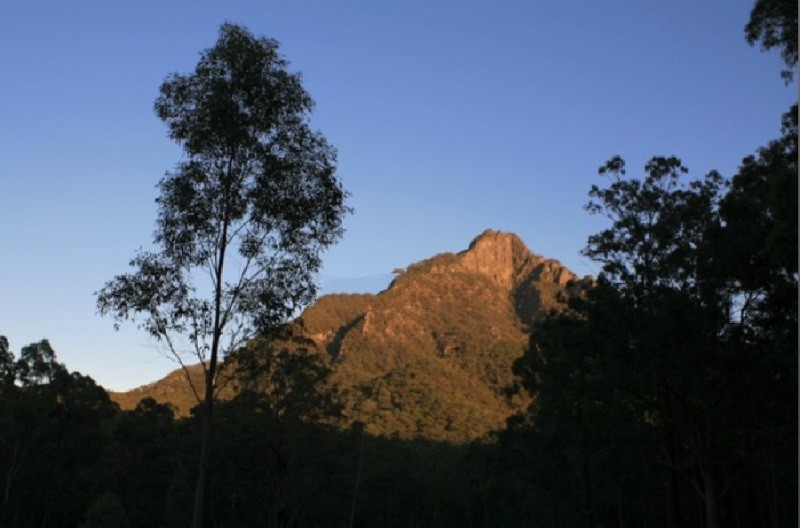
Before our climb, my husband, however, is unwilling to speculate about the duration of tomorrow’s adventure.
Finishing our wine, we make the short walk back to Boolamoola, one of the retreat’s two charming self-contained Queenslander homesteads, to prepare.
Three litres of water each?
Check.
Hat, sunscreen, warm clothes, and hiking boots?
Ready.
Finally, we tuck the weighty bags of scroggin’ – high-energy snacks that Innes and his wife, Tracey, have provided – safely into our daypacks.
Following a simple, self-prepared meal, we slip into a deep, early sleep, cocooned in the silence of the surrounding countryside.
And at 6 am sharp, Innes meets us at our back doorstep.
East Peak Ascent
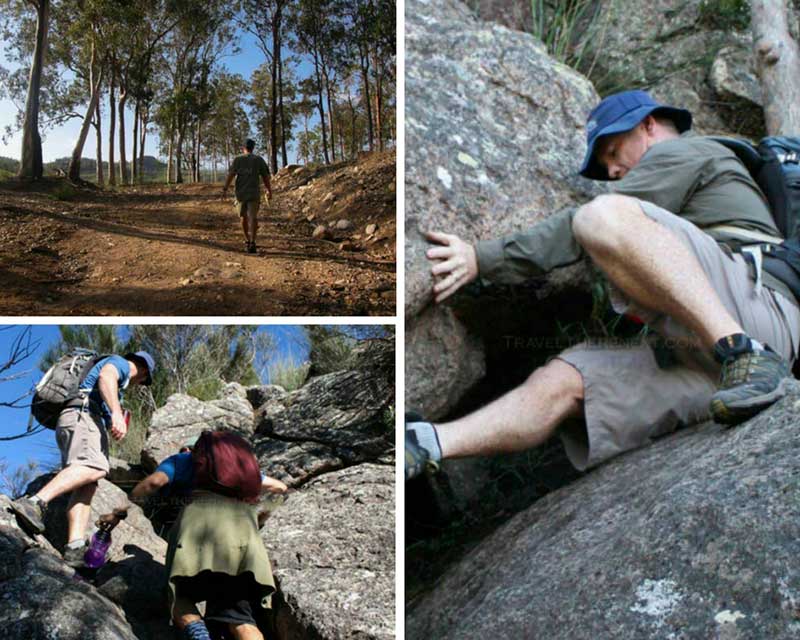
May’s early morning twilight quickly gives way to gentle light and hints of warmth as we traipse along an occasionally undulating, southwest-moving fire trail.
An hour later, one of my outer layers shed, we begin the ascent up the East Peak’s southwest route.
As with other routes up Mt Barney’s peaks, this one is unmarked.
Although the initial climb through eucalypt forest seems relatively straightforward, the track deteriorates, confronting us with vegetation-choked pathways, sheer, narrow ledges, and rock negotiations.
It’s obvious why the Department of National Parks, Sport and Racing’s website recommends a high level of fitness, experience, and navigational skills for tackling Mt Barney.
If Innes wasn’t with us, our chances of getting lost would be exceptionally high.
Thanks to our guide, though, this isn’t a worry.
Mt Barney – The Zone
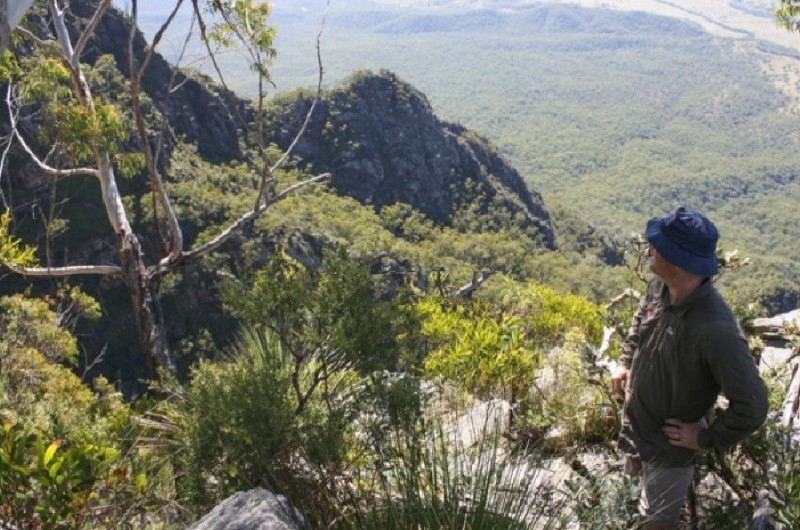
Somewhere around the 1050m mark, soon after we trade eucalypts for montane heath, the real scrambling begins.
Innes’ guidance on where to place one’s foot, hand, or ‘third leg’ (bottom) becomes not only welcome but necessary.
“From here, you’re in ‘the zone’,” Innes grins, “focussing on every step.”
He clearly thrives on every challenge this mountain presents.
As we struggle to remain in the Barney zone, Innes mentions that this route isn’t the most difficult.
The rugged Logan’s Ridge route, which Captain Patrick Logan, commandant of the Brisbane settlement, used to ascend the East Peak in 1828 requires you to concentrate the whole way, Innes explains, eye’s twinkling.
But although Logan’s Ridge is his favourite, he won’t take clients there unless he’s previously assessed their bushwalking and rock scrambling skills.
Gazing out towards the rocky, unforgiving ridgeline, I completely understand why.
Related post: Hiking Mount Bartle Frere in Tropical North Queensland is more challenging than you might think.
Southwest Path
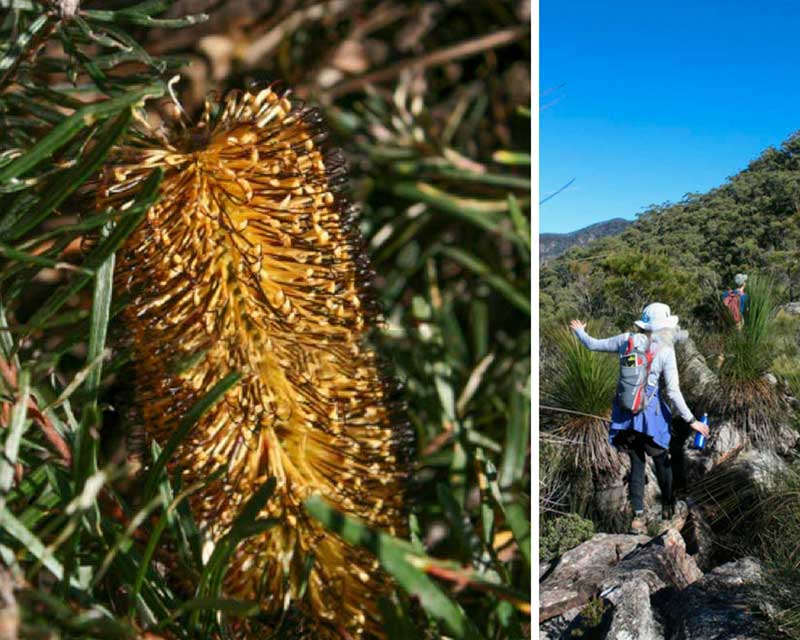
Even on the southwest path, the steep ambling and scrambling is relentless, although we do have breathers, thank goodness.
Brimming with enthusiasm, Innes has us pausing to examine mountain flora, including wild orchids in their current non-flowering state, delicate white flowers of woollsia pungens and yellow spikes of the hairpin Banksia.
There are seed cones of mature she-oaks, which sustain one of Queensland’s vulnerable species, the glossy black cockatoo and the narrow, smooth trunk of the rare mallee ash.
We devour our scroggin’ – lollies first, of course – and absorb ever loftier views towards Mt Ernest and the two-tiered cliffs of Mt Lindesay, also part of World Heritage-listed Mt Barney National Park.
Then Innes reaches for my camera, keen that we take home at least a few photos with both my husband and me in them.
Nearing the summit after five full hours, we meet two other parties who have travelled the same route today.
I’m amazed they’ve made it without Innes (who, incidentally, has climbed to this spot well over 150 times) but they explain that one member of each group has reached the top before, led by someone else with experience climbing Mt Barney.
View From The Summit
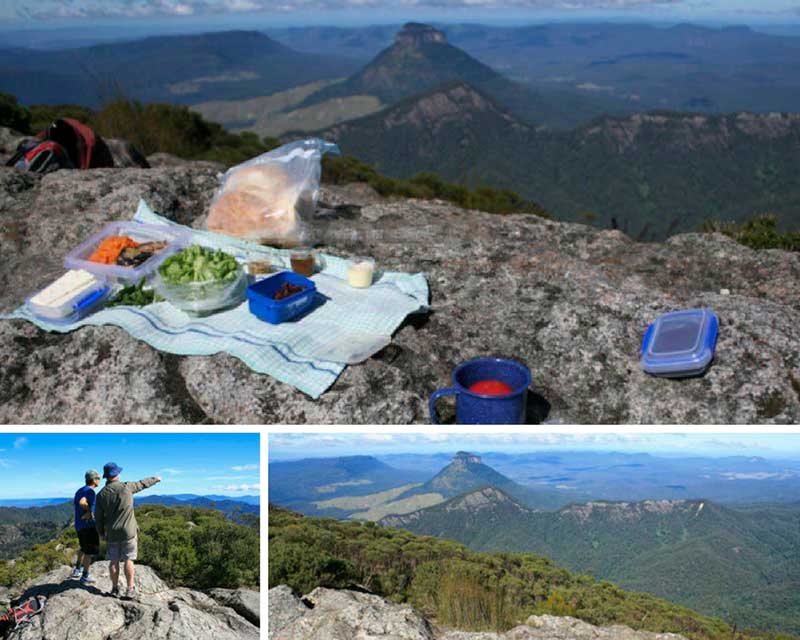
As for the views from the summit of Mt Barney, they’re worth every bruise and drop of sweat.
The nearby peaks, temptation for future adventures, perhaps, colour the landscape between us and the blue ranges beyond.
The day is clear, and, looking eastwards, we can make out the distant tip of Mt Warning in Murwillumbah, the Lamington plateau, and even the slightest shimmer of ocean.
After an hour spent sipping local plunger coffee and savouring rolls stuffed with fresh basil and lettuce, sundried tomatoes, eggplant, feta and homemade cherry tomato chutney, a nap sounds more appealing than a descent down the also befuddling South Ridge.
Descending the South Ridge
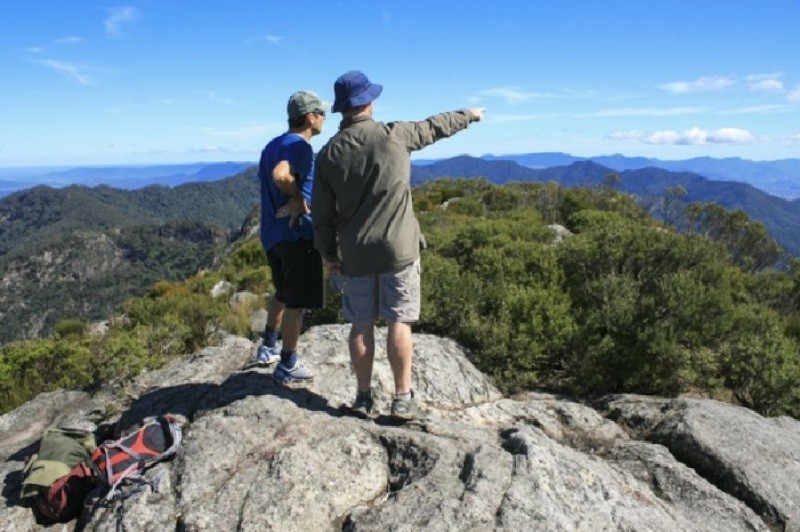
This route is unmarked beyond the saddle between Barney’s east and west peaks and has a less than glowing reputation for being the most popular location for mountain rescues.
A full eleven hours after our departure this morning, we finally drag ourselves back to the retreat.
Sweaty, filthy, and sore from several slips and trips, I realise just how acutely I’d underestimated this mountain (and probably overestimated my fitness).
While I’d love to return one day and share Mt Barney with friends, I won’t be tackling the southwest route independently, nor am I confident in my ability to navigate beyond the saddle along the South Ridge route.
This mighty, magnificent, demanding mountain deserves respect … and a guide.
Mt Barney accommodation
Mt Barney Lodge Country Retreat
Peaceful Mt Barney Lodge Country Retreat (1093 Upper Logan Rd, Mt Barney), located at the base of Mt Barney, has two self-contained Queenslander homesteads (Boolamoola, which sleeps 6, and Moringararah, which sleeps 15) as well as shady, grassed sites with creek frontage and access to a modern, tiled amenities block.
Deluxe camper trailers and rustic cabins are also available.
The retreat also offers full-day (eight to 14 hours) guided expeditions up Mt Barney along a variety of routes including snacks, lunch and more.
A high level of fitness is required.
When to climb Mt Barney
Mt Barney ascents are best left for southeast Queensland’s cooler months.
Although there are more daylight hours in summer, the humidity makes the hike much more tiring.
Winter can be quite cold at the summit but as the temperature is cooler, you’ll be less fatigued during the hike.
The most important weather condition to check before hiking Mt Barney is for rain.
Reconsider your plans if rain is forecast as the rocks can become even more slippery and dangerous.
Mt Barney packing list
Map and compass
As the paths are not marked, it’s not always obvious where you should be walking and it’s easy to get off track, so a topographic map and compass are essential.
Hiking boots
As this is a difficult hike through rough terrain, a sturdy pair of hiking boots with good ankle support is required.
Weatherproof clothing
The weather can change fairly rapidly, so it pays to have a rain jacket with a hood and pack a pair of water-resistant pants
Headlamp
A headlamp might come in useful should your hike take longer than planned. The sun sets early in Southeast Queensland and gets dark very quickly.
Sunscreen
Protect yourself from the harsh Queensland sun with strong sunscreen and make sure to pack a first-aid kit too.
Water
You can never have too much water. Pack at least 4L of water for each person.
- 50 Incredible Things To Do In Brisbane
- Best Brisbane Hotels
- 5 4WD Tracks Near Brisbane
- Where To Drink Craft Beer in Brisbane
- 10 Best Brisbane Cafes
- 10 Steak Restaurants in Brisbane
- Where To Find The Best Food In Brisbane
- Stanthorpe and the Granite Belt
- The secret of Grevillea Robyn Gordon
- Hiking Mount Barney
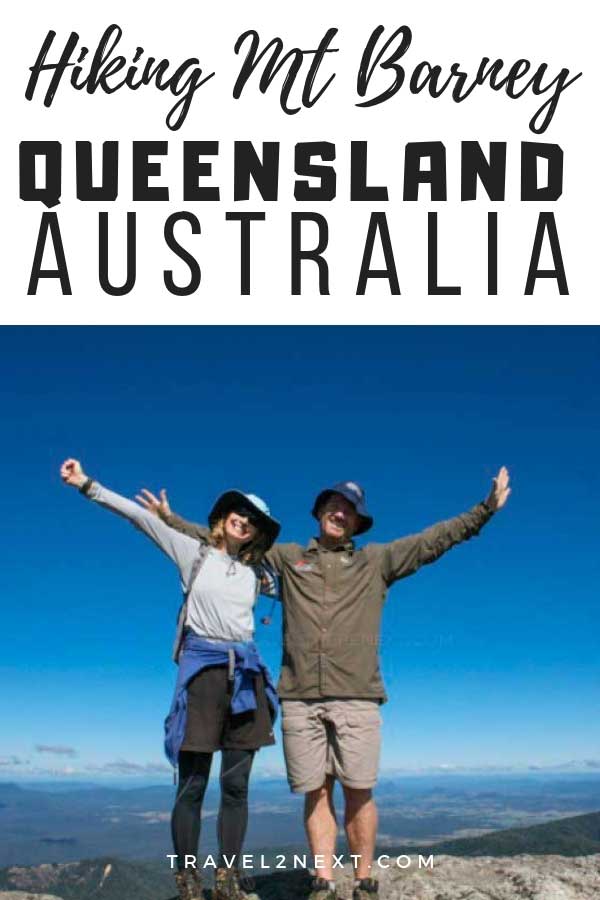
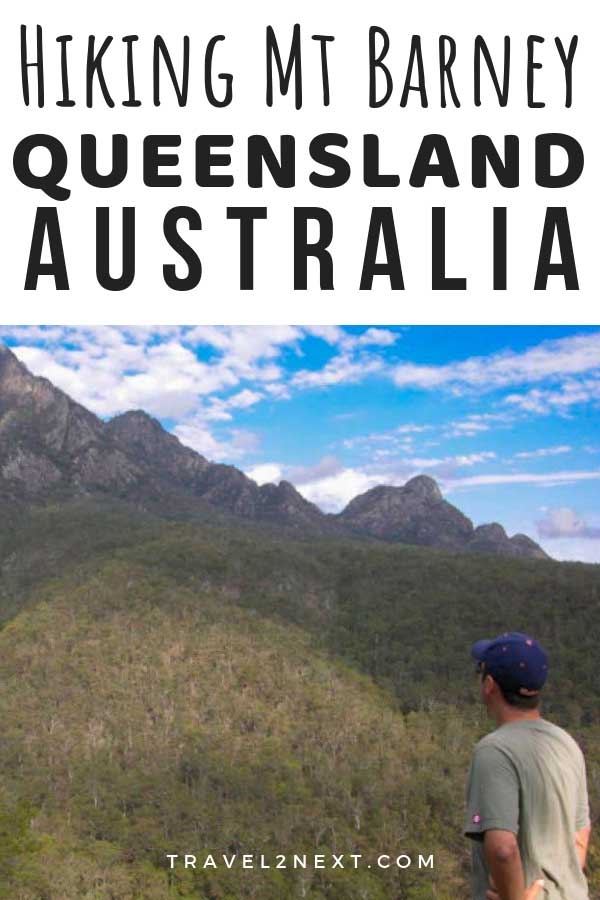
Plan Your Trip

Rent A Car – Find the best car rental rates at Discover Cars. They compare car hire companies to provide you with the best deal right now.

Find A Hotel – If you’re curious about this article and are looking for somewhere to stay, take a look at these amazing hotels.



